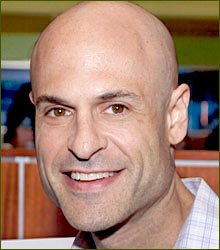Population Health
News
Penn Smoking Cessation Study Triggers Media Dissemination Blitz
Identifies Effective Interventions Using Financial Incentives
Grounded in new scientific insights that played directly to U.S. industry’s quest to make expensive corporate wellness program work, a new University of Pennsylvania behavioral economics study on smoking cessation interventions has generated massive amounts of news coverage across the country.
Within one week of being published in the New England Journal of Medicine on May 13, the article, “Randomized Trial of Four Financial-Incentive Programs for Smoking Cessation,” became the subject of extensive coverage across the Twittersphere, Blogosphere and every major news medium (see more than four dozen sample media links below).

The work focused on four different ways that $800 worth of rewards were made available to adult smokers who achieved a series of smoking cessation goals over a six month period. All the 2,530 participants in the study were employees or relatives or friends of employees of CVS Health.
Supported by grants from the National Cancer Institute, National Institute of Aging and CVS Health, the study was led by Scott Halpern, MD, PhD, and Kevin Volpp, MD, PhD, of Penn’s Leonard Davis Institute of Health Economics’ Center for Health Incentives and Behavioral Economics (CHIBE).
Tripled the rate
One finding was that, overall, the process of working toward an $800 cash reward nearly tripled the rate of success over that routinely achieved in traditional smoking cessation programs.
The authors characterize the economics of this finding as very positive and explain, “Because employing a smoker is estimated to cost $5,816 more each year than employing a nonsmoker, even an $800 payment borne entirely by employers and paid only to those who quit would be highly cost-saving.”
The findings quickly caught the attention of a number of external audiences from journalists who cover health care, corporate managers who oversee wellness programs and professionals in related health care fields like insurance and health services research.
Fostered by the Affordable Care Act, the general concept of wellness programs that seek to alter employee populations’ unhealthy behaviors has rapidly taken hold in industry. The latest estimates are that 80% of large U.S. corporations have established such programs in hopes of lowering their overall health coverage costs.

Earlier doubts and dissemination issues
But despite federal promotion and wide corporate acceptance of the idea, analyses during the first few years of wellness efforts have questioned the programs’ cost effectiveness and low level of adoption by the target employee populations. At the same time, corporate wellness managers have complained that academic researchers are not effectively disseminating their new findings in this area.
The Halpern-Volpp-led study points out that the design of the first wave of wellness programs “is usually based on traditional economic assumption that the size of the incentive determines its effectiveness” — the idea that the more you pay participants, the more they’re likely to change their behavior.
But, the authors point out, “behavioral economic theory suggests that incentives of similar size may have very different effects” depending on how they are designed and implemented — the idea that the mechanics of how a person’s rewards are accrued and ultimately paid out may be more relevant to his or her behavior change than the absolute amount of the reward.
In addition to a control group receiving standard smoking cessation treatment this study separated 1060 participants into four other groups. Members of two of these were eligible for individual incentives based on their own behavior. Members of a third group were offered incentives that could only be achieved through various levels of collaboration with other group members. A fourth group was structured to offer incentives in a competitive environment.
Same reward amount, different accrual logistics
If they succeeded at meeting their incremental cessation goals and were not smoking at six months, members of all groups could potentially take home the same level of total financial reward — $800.
In one of the individual incentive cohorts and one of the group-action incentive cohorts, participants were required to deposit $150 of their own money and risk forfeiting it if they failed to achieve their cessation goals. That amount made up part of the total $800 they could receive if they succeeded.
Perhaps the most striking finding of the study was that 52% of those who choose this incentive structure with deposit requirements achieved sustained tobacco abstinence at six months. Only 17.1% of participants in the other incentive models achieved sustained abstinence during the same period.
However, the authors note that only 14% of participants assigned to the deposit contract group accepted the program, while 90% of those assigned to the rewards only-group accepted it.”
Sampling of broad dissemination
Aside from cascades of mentions across Twitter and blogs during its first week of publication, the study became the subject of major articles across the country. These included major print and online newspapers like The New York Times, Wall Street Journal, Washigton Post, Los Angeles Times and Huffington Post. The Associated Press and Reuters syndicated their versions of the Penn study story to metro daily newspapers from Main to California.
National Public Radio along with TV networks ABC, CBS, NBC and Fox News produced major stories on the smoking cessation findings coast to coast.
Headlines like “New Science of How to Quit Smoking,” “Money May Convince Smokers to Quit,” and “What to Quit Smoking? Penalties More Effective Than Rewards,” in publications like Time, USNews & World Report and The Business Standard showcased the study to large audiences. The findings were similarly spotlighted in a variety of general business publications, including Tech Times, The Business Journals, Yahoo Finance and Knowledge@Wharton.
Among the other categories of publications that produced articles on the study were:
– General Circulation Science publications, including Science Times and Science World Report.
– Health Care Industry publications, including, Medscape, MedPageToday, MedCityNews, HealthDay, Medical Daily, Fierce Health Payer, Youth Health Magazine, WebMD, HealthFinder.gov and The Clinical Advisor.
– Pharmaceutical Industry publications, including the American Pharmacists Association’s Pharmacist.com, Pharmacy Times, Phamaceutical Journal and DrugStoreNews.
– Corporate Trade magazines, including Business Insurance, Healthcare Payer News and Personnel Today.
– International publications, including The Guardian, Ireland’s The Journal, The India Post, AsiaOne Health, ChannelNewsAsia, New Zealand’s Rand Daily Mail and MedicalBrief, Africa’s Medical Media Digest.
– An eclectic collection of blogs including DoctorosLounge, The CandidScientist, RespiratoryScholar, WallStreetHedge, LifeScript Womens Health, NewBridgeFoundation, ShopRite, Askmen and BigThink.